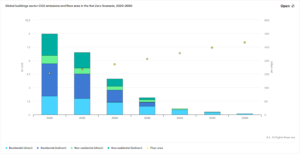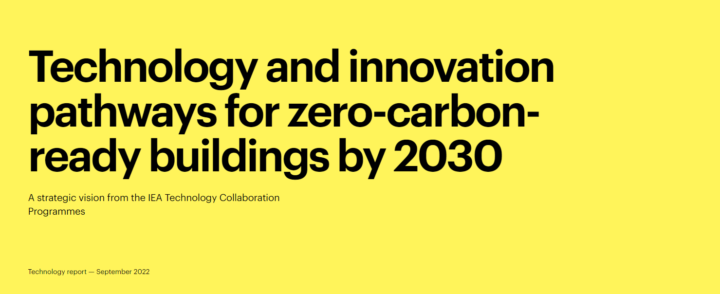Technology and innovation pathways for zero-carbon-ready buildings by 2030
The rapid deployment in the building sector of clean energy technologies and behavioural shifts, supported by innovation strategies, has the potential to significantly reduce carbon dioxide (CO2) emissions by 2030 and paves the way to achieve the zero-carbon buildings stock targets under the IEA’s Net Zero Emissions by 2050 Scenario (NZE Scenario). Buildings operations account directly and indirectly for approximately 30% of global energy sector emissions.
The IEA projects the global building floor area to grow by 75% in the next 30 years, with around 80% of the increase in emerging markets and developing economies. Despite the substantial corresponding increase in energy demand by mid-century, total direct emissions from the building sector need to contract sharply, falling from about 3 Gt in 2020 to less than 2 Gt in 2030, and to just 120 Mt in 2050, according to the NZE Scenario. Meanwhile, indirect emissions also need to go to zero by decarbonising power generation and district heating.
Reaching those targets for a zero-carbon buildings stock by 2050 is a significant challenge, but one that also opens important opportunities. The current decade is a critical period for governments to put in place policy frameworks and regulations to support this vision. Behavioural changes play an essential, complementary role in reaching decarbonisation targets. In the residential building sector, a roughly 10% reduction in the cooling and heating of homes could potentially be achieved by 2030 through behavioural changes. Decarbonising both existing and new buildings will also require a range of measures that often need to be tailored to local climate conditions, occupant behaviour and technology availability.
A key milestone in transforming the global building sector in the NZE Scenario calls for all new and retrofitted buildings to be at zero-carbon-ready levels by 20301. This requires buildings to comply with criteria on energy efficiency, low-emission fuel use, life cycle-based CO2 emissions reporting, integration with electricity systems relying on high shares of variable renewables and resilience to changing climate conditions.

Latest data shows that about 80 countries have mandatory or voluntary energy building codes in place, and many are updating them to reflect the continuous evolution of standards in construction practices, materials and technologies. Nonetheless, there are only around 45 with mandatory codes covering the entire buildings sector and just one-third of the global floor area additions to 2030 will be in countries with such codes.
Despite additional progress on energy efficiency and the decarbonisation of electricity generation, these measures so far are not enough to curb the growth in CO2 emissions from buildings operations, which increased by about 1% per year on average over the last decade.
Source: IEA



